Unit 6: Management a Successful Business Project: Fusion Suites Plan
VerifiedAdded on 2023/02/07
|43
|10777
|86
Project
AI Summary
This project management assignment, submitted by a student at the University of Greenwich, focuses on developing a digital marketing model for Fusion Suites Da Nang Beach. The report begins with an introduction to the project, highlighting the need for a new marketing strategy to enhance the hotel's competitiveness in the tourism industry. It then explains and evaluates the stages of the project life cycle (PLC), including initiation, planning, execution, and closing, and their importance to project success. The assignment also examines factors to be considered when compiling a project management plan (PMP), such as project aims, scope, milestones, work breakdown structure (WBS), cost and quality estimations, risk management, and stakeholder communication. Furthermore, the report evaluates research methods and strategies, including primary and secondary research, and presents a project management plan with detailed components like project aims, cost, scope, timetable, milestone schedule, and risk management. The assignment concludes with a work breakdown structure, Gantt chart, weekly logbooks, and a conclusion summarizing the key findings and recommendations.
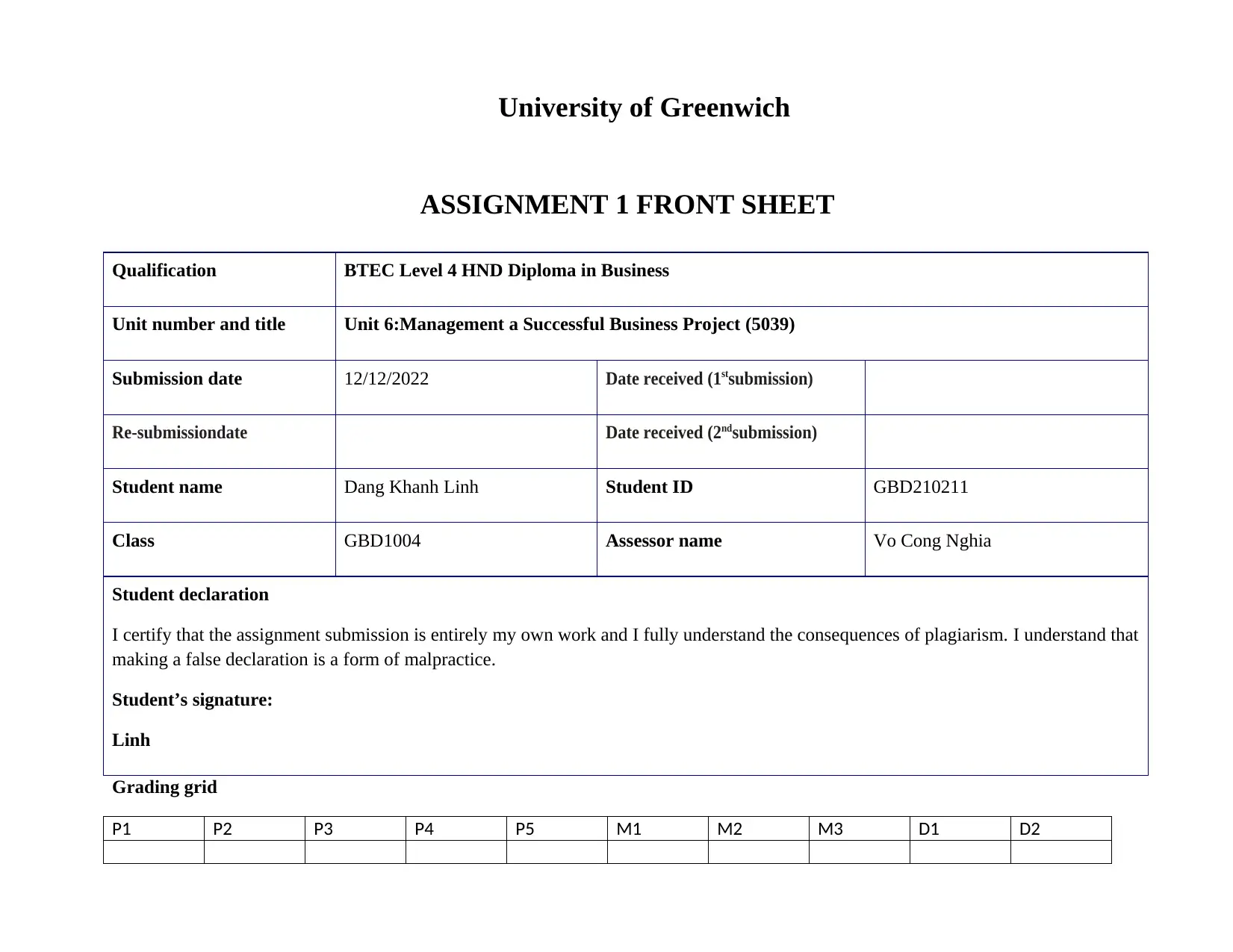
University of Greenwich
ASSIGNMENT 1 FRONT SHEET
Qualification BTEC Level 4 HND Diploma in Business
Unit number and title Unit 6:Management a Successful Business Project (5039)
Submission date 12/12/2022 Date received (1 st submission)
Re-submissiondate Date received (2 nd submission)
Student name Dang Khanh Linh Student ID GBD210211
Class GBD1004 Assessor name Vo Cong Nghia
Student declaration
I certify that the assignment submission is entirely my own work and I fully understand the consequences of plagiarism. I understand that
making a false declaration is a form of malpractice.
Student’s signature:
Linh
Grading grid
P1 P2 P3 P4 P5 M1 M2 M3 D1 D2
ASSIGNMENT 1 FRONT SHEET
Qualification BTEC Level 4 HND Diploma in Business
Unit number and title Unit 6:Management a Successful Business Project (5039)
Submission date 12/12/2022 Date received (1 st submission)
Re-submissiondate Date received (2 nd submission)
Student name Dang Khanh Linh Student ID GBD210211
Class GBD1004 Assessor name Vo Cong Nghia
Student declaration
I certify that the assignment submission is entirely my own work and I fully understand the consequences of plagiarism. I understand that
making a false declaration is a form of malpractice.
Student’s signature:
Linh
Grading grid
P1 P2 P3 P4 P5 M1 M2 M3 D1 D2
Paraphrase This Document
Need a fresh take? Get an instant paraphrase of this document with our AI Paraphraser
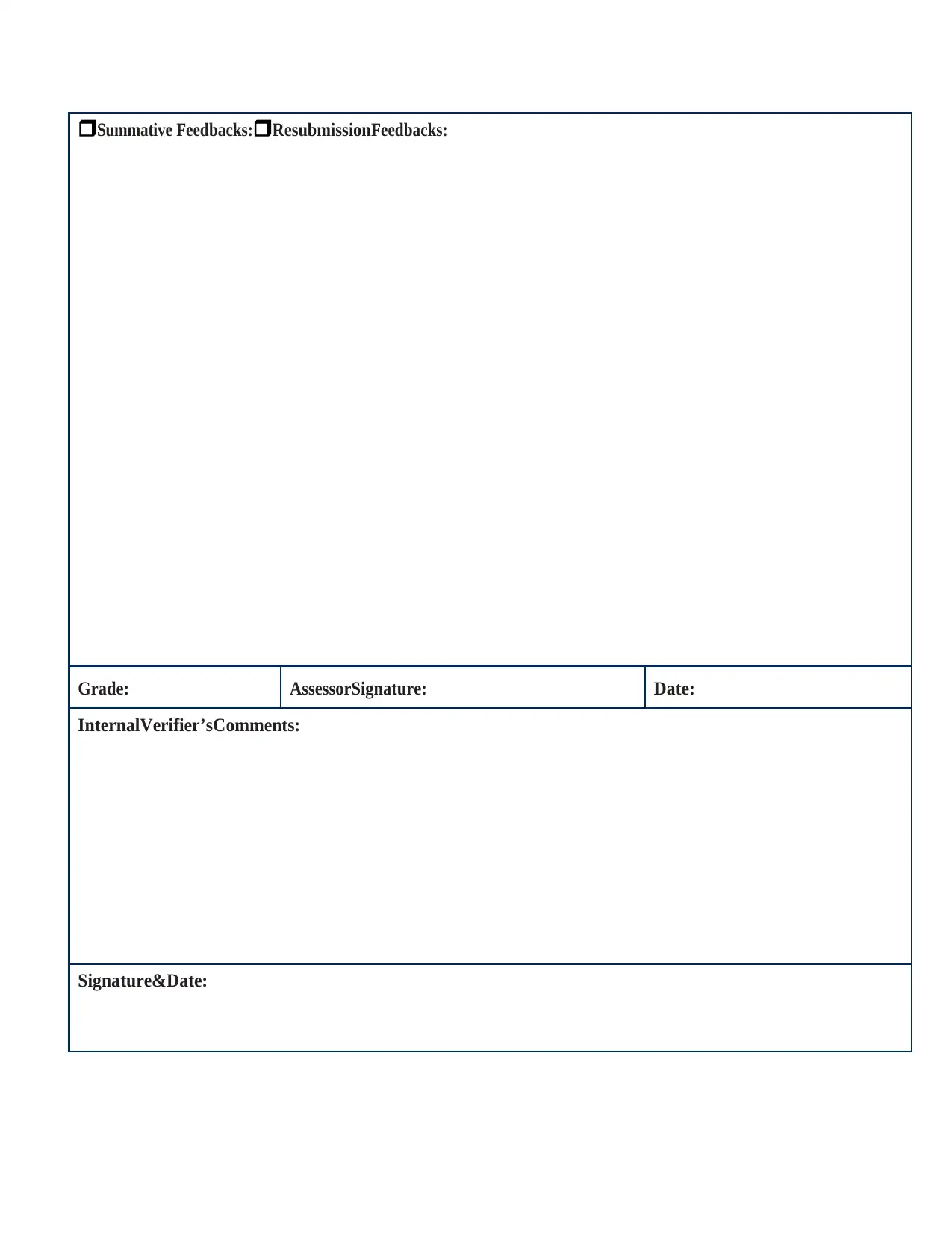
Summative Feedbacks: Resubmission Feedbacks:
Grade: AssessorSignature: Date:
InternalVerifier’sComments:
Signature&Date:
Grade: AssessorSignature: Date:
InternalVerifier’sComments:
Signature&Date:
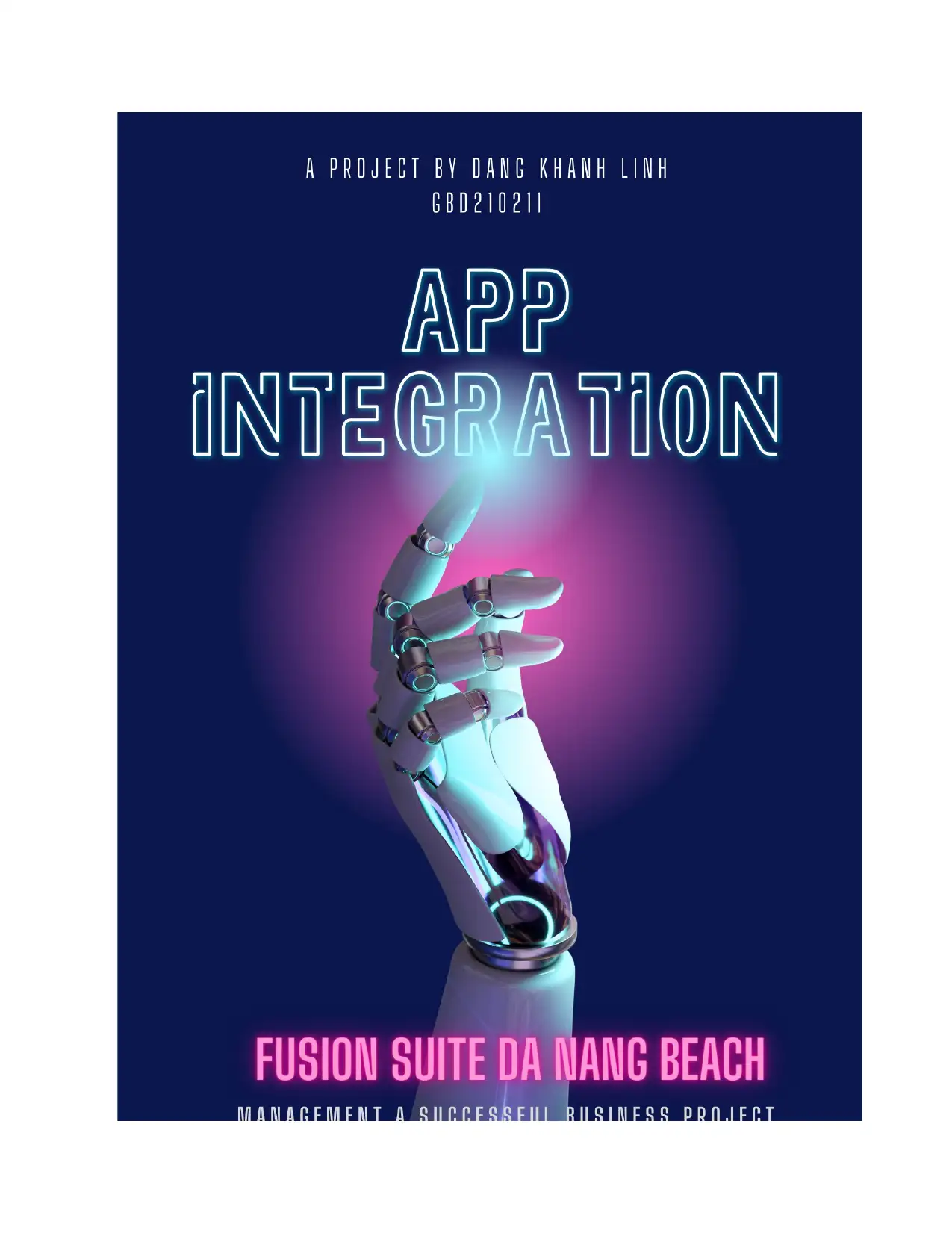
⊘ This is a preview!⊘
Do you want full access?
Subscribe today to unlock all pages.

Trusted by 1+ million students worldwide
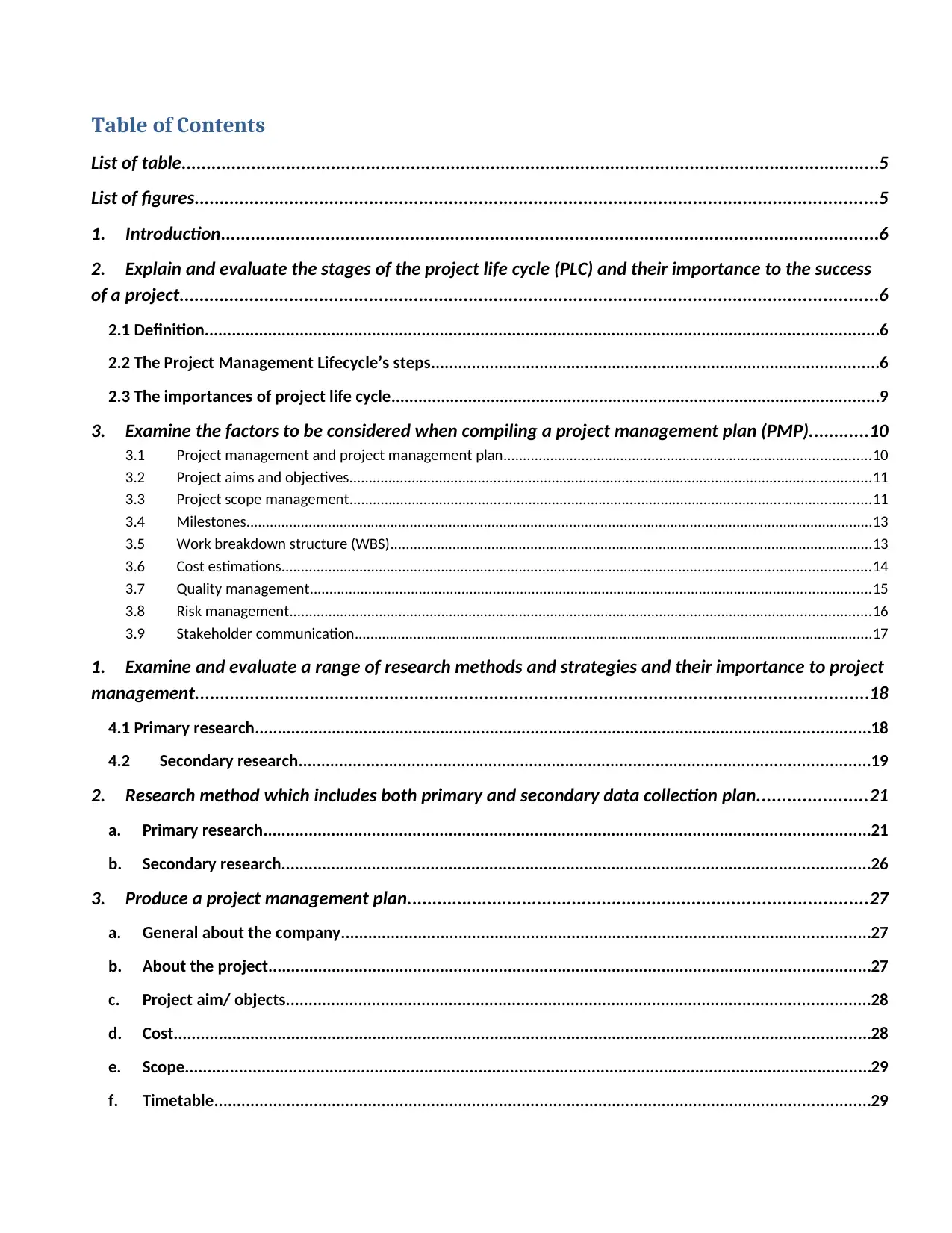
Table of Contents
List of table............................................................................................................................................5
List of figures.........................................................................................................................................5
1. Introduction....................................................................................................................................6
2. Explain and evaluate the stages of the project life cycle (PLC) and their importance to the success
of a project............................................................................................................................................6
2.1 Definition.....................................................................................................................................................6
2.2 The Project Management Lifecycle’s steps...................................................................................................6
2.3 The importances of project life cycle............................................................................................................9
3. Examine the factors to be considered when compiling a project management plan (PMP)............10
3.1 Project management and project management plan..............................................................................................10
3.2 Project aims and objectives......................................................................................................................................11
3.3 Project scope management......................................................................................................................................11
3.4 Milestones.................................................................................................................................................................13
3.5 Work breakdown structure (WBS)............................................................................................................................13
3.6 Cost estimations.......................................................................................................................................................14
3.7 Quality management................................................................................................................................................15
3.8 Risk management.....................................................................................................................................................16
3.9 Stakeholder communication.....................................................................................................................................17
1. Examine and evaluate a range of research methods and strategies and their importance to project
management.......................................................................................................................................18
4.1 Primary research........................................................................................................................................18
4.2 Secondary research..............................................................................................................................19
2. Research method which includes both primary and secondary data collection plan......................21
a. Primary research......................................................................................................................................21
b. Secondary research..................................................................................................................................26
3. Produce a project management plan............................................................................................27
a. General about the company.....................................................................................................................27
b. About the project.....................................................................................................................................27
c. Project aim/ objects.................................................................................................................................28
d. Cost..........................................................................................................................................................28
e. Scope........................................................................................................................................................29
f. Timetable.................................................................................................................................................29
List of table............................................................................................................................................5
List of figures.........................................................................................................................................5
1. Introduction....................................................................................................................................6
2. Explain and evaluate the stages of the project life cycle (PLC) and their importance to the success
of a project............................................................................................................................................6
2.1 Definition.....................................................................................................................................................6
2.2 The Project Management Lifecycle’s steps...................................................................................................6
2.3 The importances of project life cycle............................................................................................................9
3. Examine the factors to be considered when compiling a project management plan (PMP)............10
3.1 Project management and project management plan..............................................................................................10
3.2 Project aims and objectives......................................................................................................................................11
3.3 Project scope management......................................................................................................................................11
3.4 Milestones.................................................................................................................................................................13
3.5 Work breakdown structure (WBS)............................................................................................................................13
3.6 Cost estimations.......................................................................................................................................................14
3.7 Quality management................................................................................................................................................15
3.8 Risk management.....................................................................................................................................................16
3.9 Stakeholder communication.....................................................................................................................................17
1. Examine and evaluate a range of research methods and strategies and their importance to project
management.......................................................................................................................................18
4.1 Primary research........................................................................................................................................18
4.2 Secondary research..............................................................................................................................19
2. Research method which includes both primary and secondary data collection plan......................21
a. Primary research......................................................................................................................................21
b. Secondary research..................................................................................................................................26
3. Produce a project management plan............................................................................................27
a. General about the company.....................................................................................................................27
b. About the project.....................................................................................................................................27
c. Project aim/ objects.................................................................................................................................28
d. Cost..........................................................................................................................................................28
e. Scope........................................................................................................................................................29
f. Timetable.................................................................................................................................................29
Paraphrase This Document
Need a fresh take? Get an instant paraphrase of this document with our AI Paraphraser
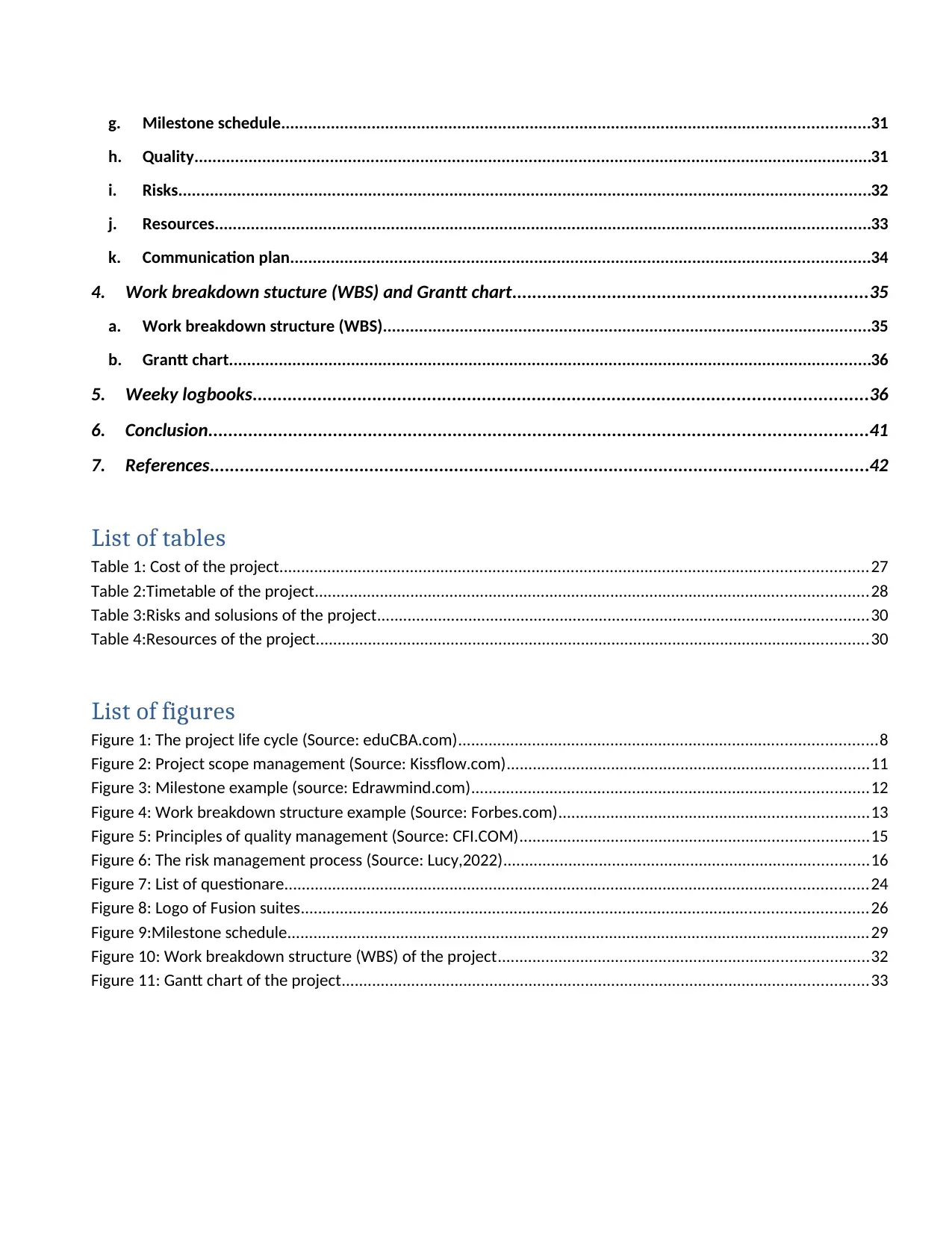
g. Milestone schedule..................................................................................................................................31
h. Quality......................................................................................................................................................31
i. Risks.........................................................................................................................................................32
j. Resources.................................................................................................................................................33
k. Communication plan................................................................................................................................34
4. Work breakdown stucture (WBS) and Grantt chart.......................................................................35
a. Work breakdown structure (WBS)............................................................................................................35
b. Grantt chart..............................................................................................................................................36
5. Weeky logbooks...........................................................................................................................36
6. Conclusion....................................................................................................................................41
7. References....................................................................................................................................42
List of tables
Table 1: Cost of the project.......................................................................................................................................27
Table 2:Timetable of the project...............................................................................................................................28
Table 3:Risks and solusions of the project.................................................................................................................30
Table 4:Resources of the project...............................................................................................................................30
List of figures
Figure 1: The project life cycle (Source: eduCBA.com)................................................................................................8
Figure 2: Project scope management (Source: Kissflow.com)...................................................................................11
Figure 3: Milestone example (source: Edrawmind.com)...........................................................................................12
Figure 4: Work breakdown structure example (Source: Forbes.com).......................................................................13
Figure 5: Principles of quality management (Source: CFI.COM)................................................................................15
Figure 6: The risk management process (Source: Lucy,2022)....................................................................................16
Figure 7: List of questionare......................................................................................................................................24
Figure 8: Logo of Fusion suites..................................................................................................................................26
Figure 9:Milestone schedule......................................................................................................................................29
Figure 10: Work breakdown structure (WBS) of the project.....................................................................................32
Figure 11: Gantt chart of the project.........................................................................................................................33
h. Quality......................................................................................................................................................31
i. Risks.........................................................................................................................................................32
j. Resources.................................................................................................................................................33
k. Communication plan................................................................................................................................34
4. Work breakdown stucture (WBS) and Grantt chart.......................................................................35
a. Work breakdown structure (WBS)............................................................................................................35
b. Grantt chart..............................................................................................................................................36
5. Weeky logbooks...........................................................................................................................36
6. Conclusion....................................................................................................................................41
7. References....................................................................................................................................42
List of tables
Table 1: Cost of the project.......................................................................................................................................27
Table 2:Timetable of the project...............................................................................................................................28
Table 3:Risks and solusions of the project.................................................................................................................30
Table 4:Resources of the project...............................................................................................................................30
List of figures
Figure 1: The project life cycle (Source: eduCBA.com)................................................................................................8
Figure 2: Project scope management (Source: Kissflow.com)...................................................................................11
Figure 3: Milestone example (source: Edrawmind.com)...........................................................................................12
Figure 4: Work breakdown structure example (Source: Forbes.com).......................................................................13
Figure 5: Principles of quality management (Source: CFI.COM)................................................................................15
Figure 6: The risk management process (Source: Lucy,2022)....................................................................................16
Figure 7: List of questionare......................................................................................................................................24
Figure 8: Logo of Fusion suites..................................................................................................................................26
Figure 9:Milestone schedule......................................................................................................................................29
Figure 10: Work breakdown structure (WBS) of the project.....................................................................................32
Figure 11: Gantt chart of the project.........................................................................................................................33
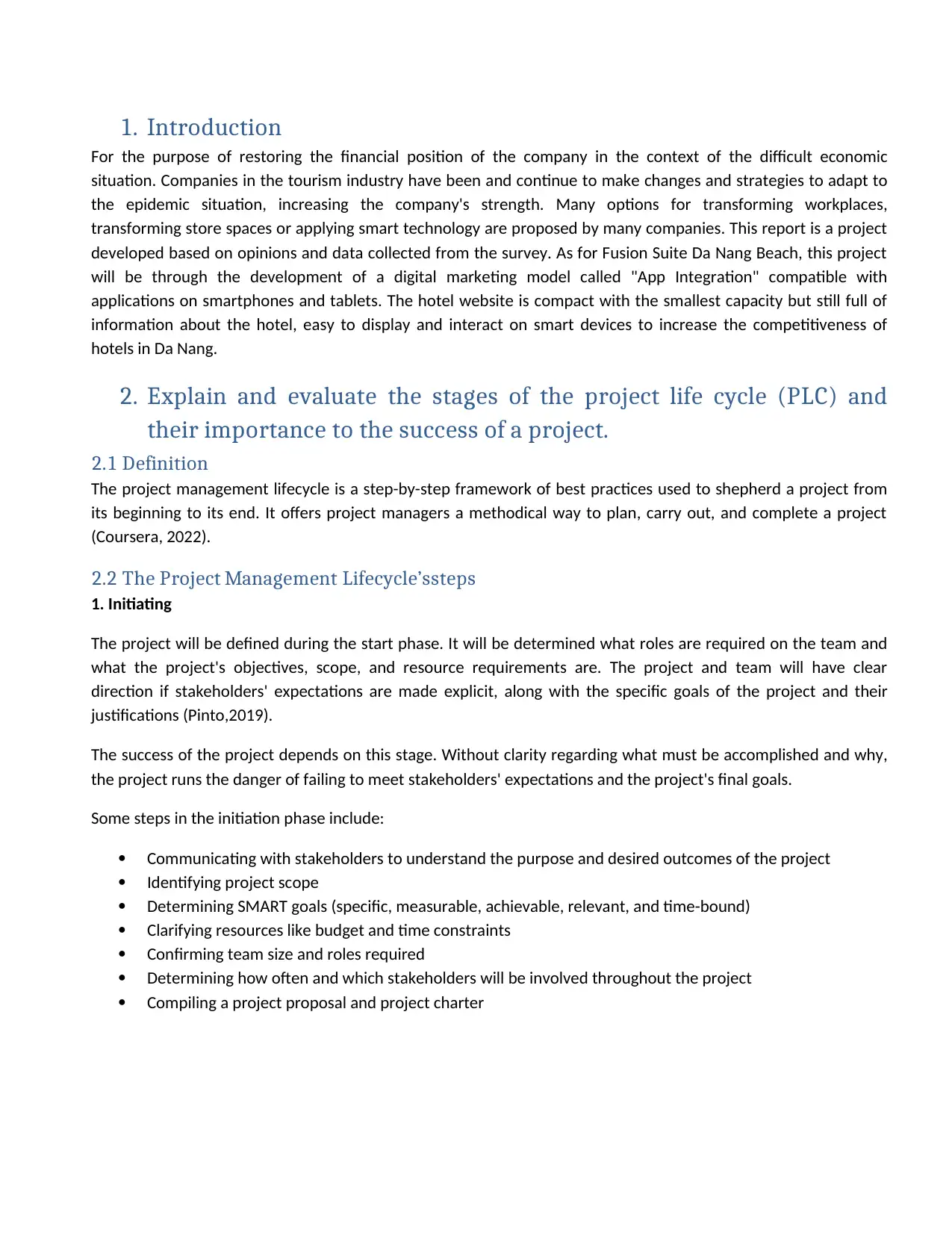
1. Introduction
For the purpose of restoring the financial position of the company in the context of the difficult economic
situation. Companies in the tourism industry have been and continue to make changes and strategies to adapt to
the epidemic situation, increasing the company's strength. Many options for transforming workplaces,
transforming store spaces or applying smart technology are proposed by many companies. This report is a project
developed based on opinions and data collected from the survey. As for Fusion Suite Da Nang Beach, this project
will be through the development of a digital marketing model called "App Integration" compatible with
applications on smartphones and tablets. The hotel website is compact with the smallest capacity but still full of
information about the hotel, easy to display and interact on smart devices to increase the competitiveness of
hotels in Da Nang.
2. Explain and evaluate the stages of the project life cycle (PLC) and
their importance to the success of a project.
2.1 Definition
The project management lifecycle is a step-by-step framework of best practices used to shepherd a project from
its beginning to its end. It offers project managers a methodical way to plan, carry out, and complete a project
(Coursera, 2022).
2.2 The Project Management Lifecycle’ssteps
1. Initiating
The project will be defined during the start phase. It will be determined what roles are required on the team and
what the project's objectives, scope, and resource requirements are. The project and team will have clear
direction if stakeholders' expectations are made explicit, along with the specific goals of the project and their
justifications (Pinto,2019).
The success of the project depends on this stage. Without clarity regarding what must be accomplished and why,
the project runs the danger of failing to meet stakeholders' expectations and the project's final goals.
Some steps in the initiation phase include:
Communicating with stakeholders to understand the purpose and desired outcomes of the project
Identifying project scope
Determining SMART goals (specific, measurable, achievable, relevant, and time-bound)
Clarifying resources like budget and time constraints
Confirming team size and roles required
Determining how often and which stakeholders will be involved throughout the project
Compiling a project proposal and project charter
For the purpose of restoring the financial position of the company in the context of the difficult economic
situation. Companies in the tourism industry have been and continue to make changes and strategies to adapt to
the epidemic situation, increasing the company's strength. Many options for transforming workplaces,
transforming store spaces or applying smart technology are proposed by many companies. This report is a project
developed based on opinions and data collected from the survey. As for Fusion Suite Da Nang Beach, this project
will be through the development of a digital marketing model called "App Integration" compatible with
applications on smartphones and tablets. The hotel website is compact with the smallest capacity but still full of
information about the hotel, easy to display and interact on smart devices to increase the competitiveness of
hotels in Da Nang.
2. Explain and evaluate the stages of the project life cycle (PLC) and
their importance to the success of a project.
2.1 Definition
The project management lifecycle is a step-by-step framework of best practices used to shepherd a project from
its beginning to its end. It offers project managers a methodical way to plan, carry out, and complete a project
(Coursera, 2022).
2.2 The Project Management Lifecycle’ssteps
1. Initiating
The project will be defined during the start phase. It will be determined what roles are required on the team and
what the project's objectives, scope, and resource requirements are. The project and team will have clear
direction if stakeholders' expectations are made explicit, along with the specific goals of the project and their
justifications (Pinto,2019).
The success of the project depends on this stage. Without clarity regarding what must be accomplished and why,
the project runs the danger of failing to meet stakeholders' expectations and the project's final goals.
Some steps in the initiation phase include:
Communicating with stakeholders to understand the purpose and desired outcomes of the project
Identifying project scope
Determining SMART goals (specific, measurable, achievable, relevant, and time-bound)
Clarifying resources like budget and time constraints
Confirming team size and roles required
Determining how often and which stakeholders will be involved throughout the project
Compiling a project proposal and project charter
⊘ This is a preview!⊘
Do you want full access?
Subscribe today to unlock all pages.

Trusted by 1+ million students worldwide
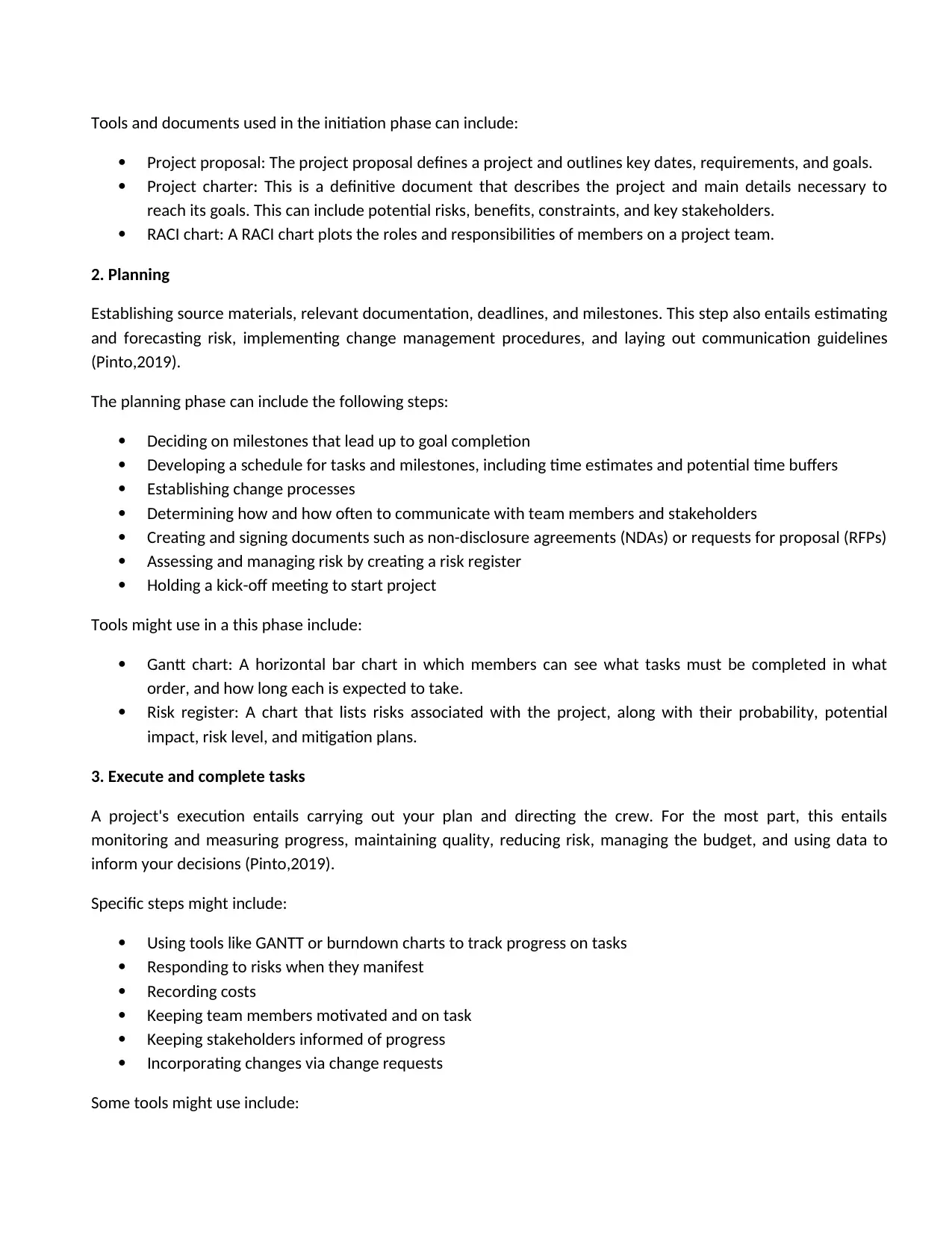
Tools and documents used in the initiation phase can include:
Project proposal: The project proposal defines a project and outlines key dates, requirements, and goals.
Project charter: This is a definitive document that describes the project and main details necessary to
reach its goals. This can include potential risks, benefits, constraints, and key stakeholders.
RACI chart: A RACI chart plots the roles and responsibilities of members on a project team.
2. Planning
Establishing source materials, relevant documentation, deadlines, and milestones. This step also entails estimating
and forecasting risk, implementing change management procedures, and laying out communication guidelines
(Pinto,2019).
The planning phase can include the following steps:
Deciding on milestones that lead up to goal completion
Developing a schedule for tasks and milestones, including time estimates and potential time buffers
Establishing change processes
Determining how and how often to communicate with team members and stakeholders
Creating and signing documents such as non-disclosure agreements (NDAs) or requests for proposal (RFPs)
Assessing and managing risk by creating a risk register
Holding a kick-off meeting to start project
Tools might use in a this phase include:
Gantt chart: A horizontal bar chart in which members can see what tasks must be completed in what
order, and how long each is expected to take.
Risk register: A chart that lists risks associated with the project, along with their probability, potential
impact, risk level, and mitigation plans.
3. Execute and complete tasks
A project's execution entails carrying out your plan and directing the crew. For the most part, this entails
monitoring and measuring progress, maintaining quality, reducing risk, managing the budget, and using data to
inform your decisions (Pinto,2019).
Specific steps might include:
Using tools like GANTT or burndown charts to track progress on tasks
Responding to risks when they manifest
Recording costs
Keeping team members motivated and on task
Keeping stakeholders informed of progress
Incorporating changes via change requests
Some tools might use include:
Project proposal: The project proposal defines a project and outlines key dates, requirements, and goals.
Project charter: This is a definitive document that describes the project and main details necessary to
reach its goals. This can include potential risks, benefits, constraints, and key stakeholders.
RACI chart: A RACI chart plots the roles and responsibilities of members on a project team.
2. Planning
Establishing source materials, relevant documentation, deadlines, and milestones. This step also entails estimating
and forecasting risk, implementing change management procedures, and laying out communication guidelines
(Pinto,2019).
The planning phase can include the following steps:
Deciding on milestones that lead up to goal completion
Developing a schedule for tasks and milestones, including time estimates and potential time buffers
Establishing change processes
Determining how and how often to communicate with team members and stakeholders
Creating and signing documents such as non-disclosure agreements (NDAs) or requests for proposal (RFPs)
Assessing and managing risk by creating a risk register
Holding a kick-off meeting to start project
Tools might use in a this phase include:
Gantt chart: A horizontal bar chart in which members can see what tasks must be completed in what
order, and how long each is expected to take.
Risk register: A chart that lists risks associated with the project, along with their probability, potential
impact, risk level, and mitigation plans.
3. Execute and complete tasks
A project's execution entails carrying out your plan and directing the crew. For the most part, this entails
monitoring and measuring progress, maintaining quality, reducing risk, managing the budget, and using data to
inform your decisions (Pinto,2019).
Specific steps might include:
Using tools like GANTT or burndown charts to track progress on tasks
Responding to risks when they manifest
Recording costs
Keeping team members motivated and on task
Keeping stakeholders informed of progress
Incorporating changes via change requests
Some tools might use include:
Paraphrase This Document
Need a fresh take? Get an instant paraphrase of this document with our AI Paraphraser
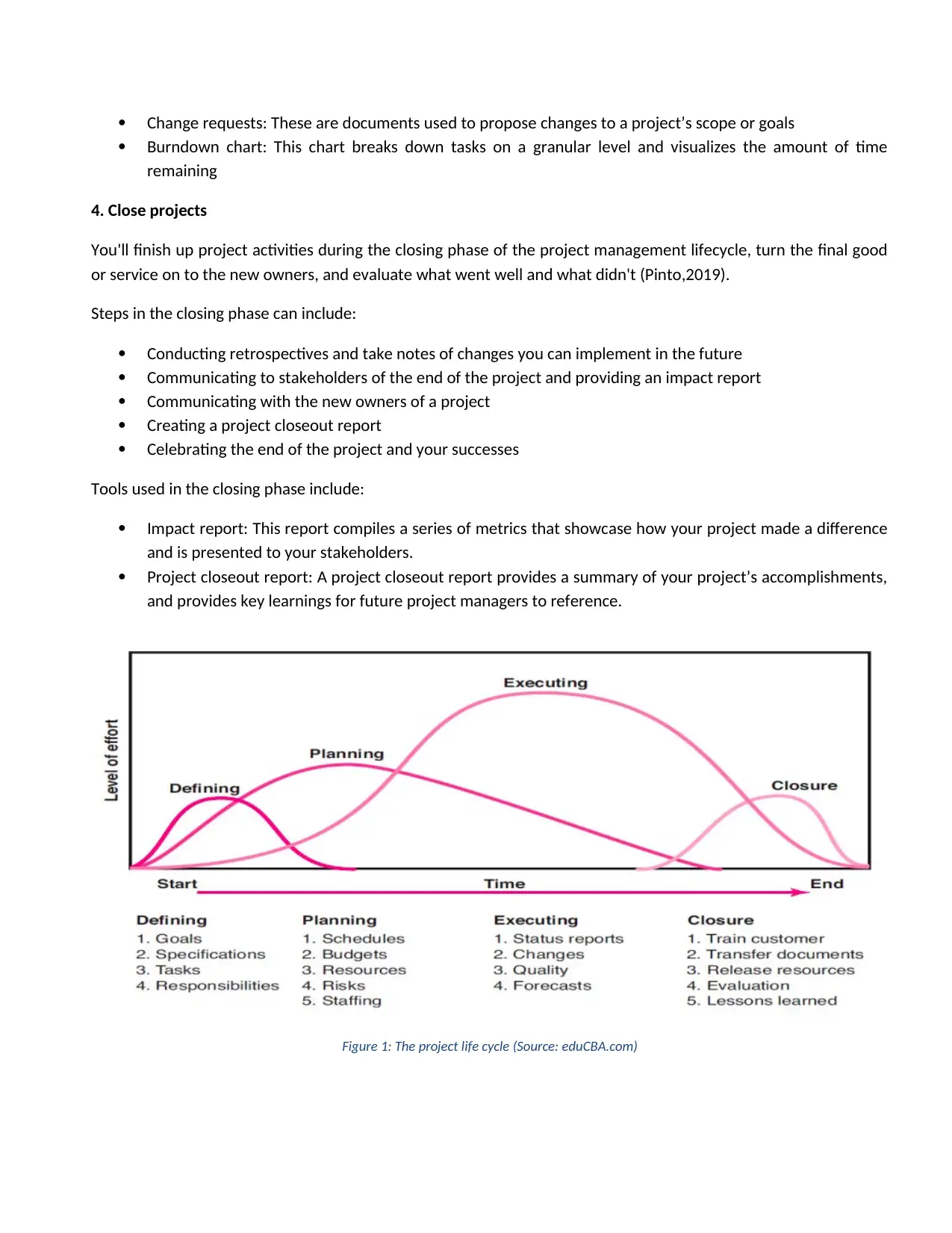
Change requests: These are documents used to propose changes to a project’s scope or goals
Burndown chart: This chart breaks down tasks on a granular level and visualizes the amount of time
remaining
4. Close projects
You'll finish up project activities during the closing phase of the project management lifecycle, turn the final good
or service on to the new owners, and evaluate what went well and what didn't (Pinto,2019).
Steps in the closing phase can include:
Conducting retrospectives and take notes of changes you can implement in the future
Communicating to stakeholders of the end of the project and providing an impact report
Communicating with the new owners of a project
Creating a project closeout report
Celebrating the end of the project and your successes
Tools used in the closing phase include:
Impact report: This report compiles a series of metrics that showcase how your project made a difference
and is presented to your stakeholders.
Project closeout report: A project closeout report provides a summary of your project’s accomplishments,
and provides key learnings for future project managers to reference.
Figure 1: The project life cycle (Source: eduCBA.com)
Burndown chart: This chart breaks down tasks on a granular level and visualizes the amount of time
remaining
4. Close projects
You'll finish up project activities during the closing phase of the project management lifecycle, turn the final good
or service on to the new owners, and evaluate what went well and what didn't (Pinto,2019).
Steps in the closing phase can include:
Conducting retrospectives and take notes of changes you can implement in the future
Communicating to stakeholders of the end of the project and providing an impact report
Communicating with the new owners of a project
Creating a project closeout report
Celebrating the end of the project and your successes
Tools used in the closing phase include:
Impact report: This report compiles a series of metrics that showcase how your project made a difference
and is presented to your stakeholders.
Project closeout report: A project closeout report provides a summary of your project’s accomplishments,
and provides key learnings for future project managers to reference.
Figure 1: The project life cycle (Source: eduCBA.com)
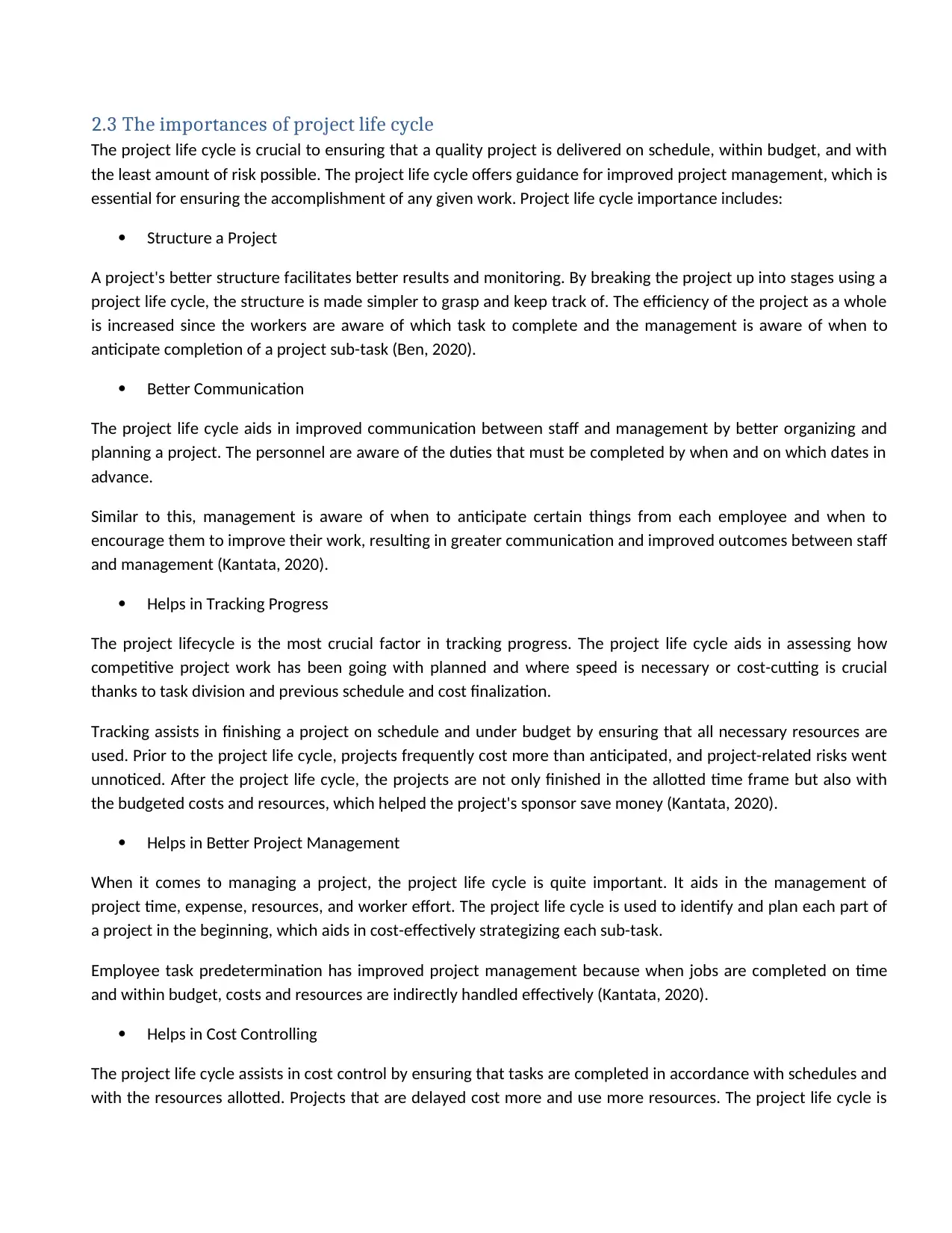
2.3 The importances of project life cycle
The project life cycle is crucial to ensuring that a quality project is delivered on schedule, within budget, and with
the least amount of risk possible. The project life cycle offers guidance for improved project management, which is
essential for ensuring the accomplishment of any given work. Project life cycle importance includes:
Structure a Project
A project's better structure facilitates better results and monitoring. By breaking the project up into stages using a
project life cycle, the structure is made simpler to grasp and keep track of. The efficiency of the project as a whole
is increased since the workers are aware of which task to complete and the management is aware of when to
anticipate completion of a project sub-task (Ben, 2020).
Better Communication
The project life cycle aids in improved communication between staff and management by better organizing and
planning a project. The personnel are aware of the duties that must be completed by when and on which dates in
advance.
Similar to this, management is aware of when to anticipate certain things from each employee and when to
encourage them to improve their work, resulting in greater communication and improved outcomes between staff
and management (Kantata, 2020).
Helps in Tracking Progress
The project lifecycle is the most crucial factor in tracking progress. The project life cycle aids in assessing how
competitive project work has been going with planned and where speed is necessary or cost-cutting is crucial
thanks to task division and previous schedule and cost finalization.
Tracking assists in finishing a project on schedule and under budget by ensuring that all necessary resources are
used. Prior to the project life cycle, projects frequently cost more than anticipated, and project-related risks went
unnoticed. After the project life cycle, the projects are not only finished in the allotted time frame but also with
the budgeted costs and resources, which helped the project's sponsor save money (Kantata, 2020).
Helps in Better Project Management
When it comes to managing a project, the project life cycle is quite important. It aids in the management of
project time, expense, resources, and worker effort. The project life cycle is used to identify and plan each part of
a project in the beginning, which aids in cost-effectively strategizing each sub-task.
Employee task predetermination has improved project management because when jobs are completed on time
and within budget, costs and resources are indirectly handled effectively (Kantata, 2020).
Helps in Cost Controlling
The project life cycle assists in cost control by ensuring that tasks are completed in accordance with schedules and
with the resources allotted. Projects that are delayed cost more and use more resources. The project life cycle is
The project life cycle is crucial to ensuring that a quality project is delivered on schedule, within budget, and with
the least amount of risk possible. The project life cycle offers guidance for improved project management, which is
essential for ensuring the accomplishment of any given work. Project life cycle importance includes:
Structure a Project
A project's better structure facilitates better results and monitoring. By breaking the project up into stages using a
project life cycle, the structure is made simpler to grasp and keep track of. The efficiency of the project as a whole
is increased since the workers are aware of which task to complete and the management is aware of when to
anticipate completion of a project sub-task (Ben, 2020).
Better Communication
The project life cycle aids in improved communication between staff and management by better organizing and
planning a project. The personnel are aware of the duties that must be completed by when and on which dates in
advance.
Similar to this, management is aware of when to anticipate certain things from each employee and when to
encourage them to improve their work, resulting in greater communication and improved outcomes between staff
and management (Kantata, 2020).
Helps in Tracking Progress
The project lifecycle is the most crucial factor in tracking progress. The project life cycle aids in assessing how
competitive project work has been going with planned and where speed is necessary or cost-cutting is crucial
thanks to task division and previous schedule and cost finalization.
Tracking assists in finishing a project on schedule and under budget by ensuring that all necessary resources are
used. Prior to the project life cycle, projects frequently cost more than anticipated, and project-related risks went
unnoticed. After the project life cycle, the projects are not only finished in the allotted time frame but also with
the budgeted costs and resources, which helped the project's sponsor save money (Kantata, 2020).
Helps in Better Project Management
When it comes to managing a project, the project life cycle is quite important. It aids in the management of
project time, expense, resources, and worker effort. The project life cycle is used to identify and plan each part of
a project in the beginning, which aids in cost-effectively strategizing each sub-task.
Employee task predetermination has improved project management because when jobs are completed on time
and within budget, costs and resources are indirectly handled effectively (Kantata, 2020).
Helps in Cost Controlling
The project life cycle assists in cost control by ensuring that tasks are completed in accordance with schedules and
with the resources allotted. Projects that are delayed cost more and use more resources. The project life cycle is
⊘ This is a preview!⊘
Do you want full access?
Subscribe today to unlock all pages.

Trusted by 1+ million students worldwide
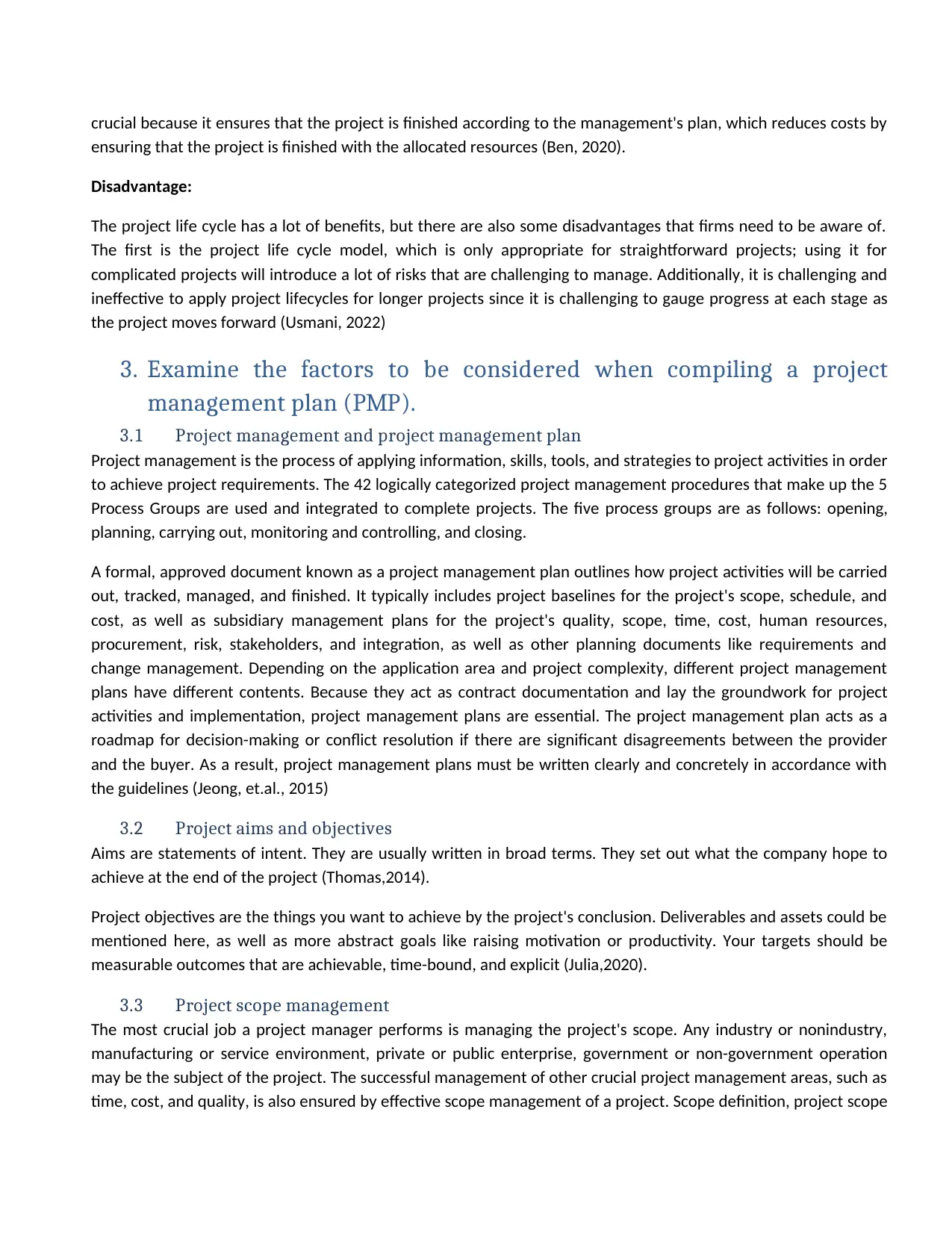
crucial because it ensures that the project is finished according to the management's plan, which reduces costs by
ensuring that the project is finished with the allocated resources (Ben, 2020).
Disadvantage:
The project life cycle has a lot of benefits, but there are also some disadvantages that firms need to be aware of.
The first is the project life cycle model, which is only appropriate for straightforward projects; using it for
complicated projects will introduce a lot of risks that are challenging to manage. Additionally, it is challenging and
ineffective to apply project lifecycles for longer projects since it is challenging to gauge progress at each stage as
the project moves forward (Usmani, 2022)
3. Examine the factors to be considered when compiling a project
management plan (PMP).
3.1 Project management and project management plan
Project management is the process of applying information, skills, tools, and strategies to project activities in order
to achieve project requirements. The 42 logically categorized project management procedures that make up the 5
Process Groups are used and integrated to complete projects. The five process groups are as follows: opening,
planning, carrying out, monitoring and controlling, and closing.
A formal, approved document known as a project management plan outlines how project activities will be carried
out, tracked, managed, and finished. It typically includes project baselines for the project's scope, schedule, and
cost, as well as subsidiary management plans for the project's quality, scope, time, cost, human resources,
procurement, risk, stakeholders, and integration, as well as other planning documents like requirements and
change management. Depending on the application area and project complexity, different project management
plans have different contents. Because they act as contract documentation and lay the groundwork for project
activities and implementation, project management plans are essential. The project management plan acts as a
roadmap for decision-making or conflict resolution if there are significant disagreements between the provider
and the buyer. As a result, project management plans must be written clearly and concretely in accordance with
the guidelines (Jeong, et.al., 2015)
3.2 Project aims and objectives
Aims are statements of intent. They are usually written in broad terms. They set out what the company hope to
achieve at the end of the project (Thomas,2014).
Project objectives are the things you want to achieve by the project's conclusion. Deliverables and assets could be
mentioned here, as well as more abstract goals like raising motivation or productivity. Your targets should be
measurable outcomes that are achievable, time-bound, and explicit (Julia,2020).
3.3 Project scope management
The most crucial job a project manager performs is managing the project's scope. Any industry or nonindustry,
manufacturing or service environment, private or public enterprise, government or non-government operation
may be the subject of the project. The successful management of other crucial project management areas, such as
time, cost, and quality, is also ensured by effective scope management of a project. Scope definition, project scope
ensuring that the project is finished with the allocated resources (Ben, 2020).
Disadvantage:
The project life cycle has a lot of benefits, but there are also some disadvantages that firms need to be aware of.
The first is the project life cycle model, which is only appropriate for straightforward projects; using it for
complicated projects will introduce a lot of risks that are challenging to manage. Additionally, it is challenging and
ineffective to apply project lifecycles for longer projects since it is challenging to gauge progress at each stage as
the project moves forward (Usmani, 2022)
3. Examine the factors to be considered when compiling a project
management plan (PMP).
3.1 Project management and project management plan
Project management is the process of applying information, skills, tools, and strategies to project activities in order
to achieve project requirements. The 42 logically categorized project management procedures that make up the 5
Process Groups are used and integrated to complete projects. The five process groups are as follows: opening,
planning, carrying out, monitoring and controlling, and closing.
A formal, approved document known as a project management plan outlines how project activities will be carried
out, tracked, managed, and finished. It typically includes project baselines for the project's scope, schedule, and
cost, as well as subsidiary management plans for the project's quality, scope, time, cost, human resources,
procurement, risk, stakeholders, and integration, as well as other planning documents like requirements and
change management. Depending on the application area and project complexity, different project management
plans have different contents. Because they act as contract documentation and lay the groundwork for project
activities and implementation, project management plans are essential. The project management plan acts as a
roadmap for decision-making or conflict resolution if there are significant disagreements between the provider
and the buyer. As a result, project management plans must be written clearly and concretely in accordance with
the guidelines (Jeong, et.al., 2015)
3.2 Project aims and objectives
Aims are statements of intent. They are usually written in broad terms. They set out what the company hope to
achieve at the end of the project (Thomas,2014).
Project objectives are the things you want to achieve by the project's conclusion. Deliverables and assets could be
mentioned here, as well as more abstract goals like raising motivation or productivity. Your targets should be
measurable outcomes that are achievable, time-bound, and explicit (Julia,2020).
3.3 Project scope management
The most crucial job a project manager performs is managing the project's scope. Any industry or nonindustry,
manufacturing or service environment, private or public enterprise, government or non-government operation
may be the subject of the project. The successful management of other crucial project management areas, such as
time, cost, and quality, is also ensured by effective scope management of a project. Scope definition, project scope
Paraphrase This Document
Need a fresh take? Get an instant paraphrase of this document with our AI Paraphraser
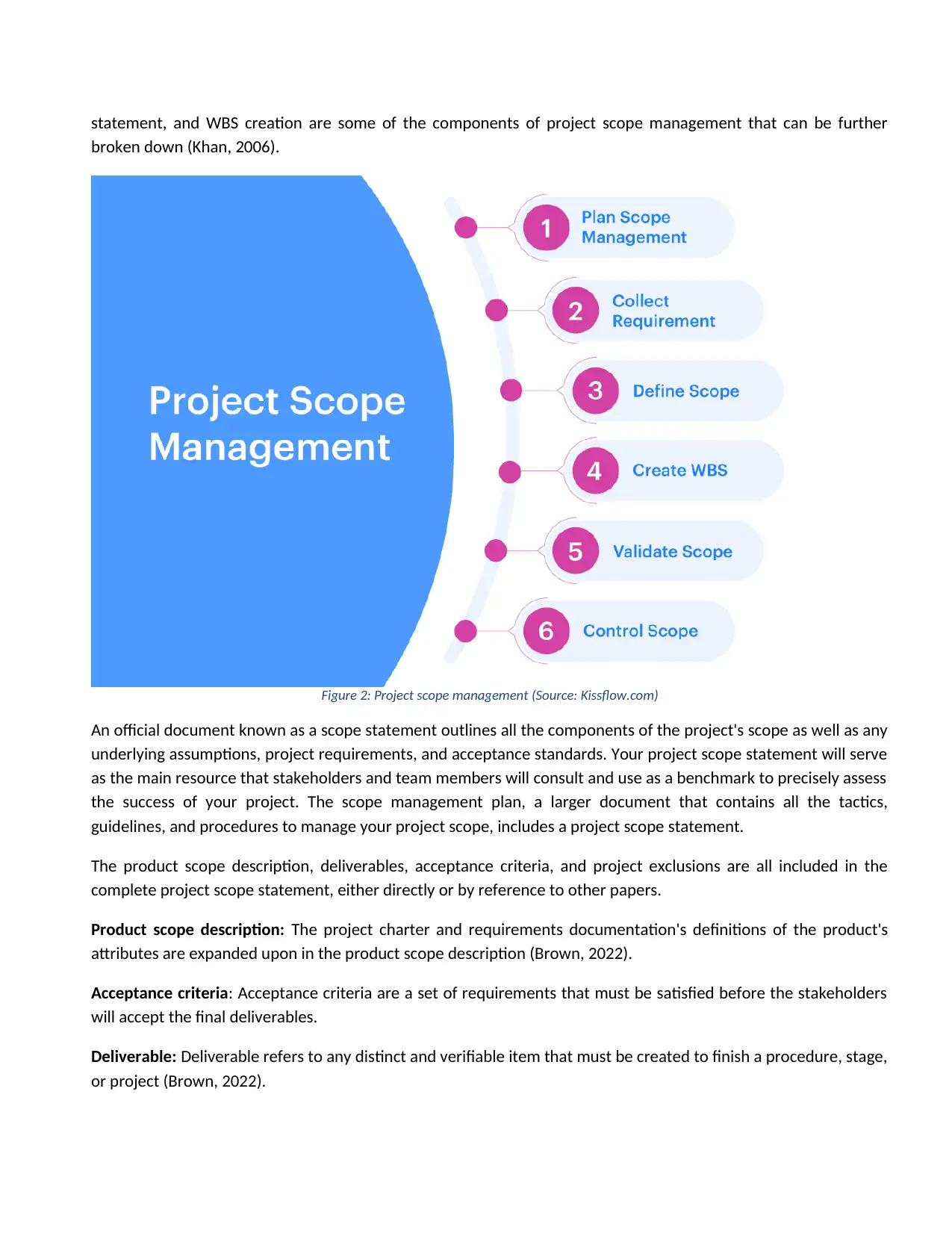
statement, and WBS creation are some of the components of project scope management that can be further
broken down (Khan, 2006).
Figure 2: Project scope management (Source: Kissflow.com)
An official document known as a scope statement outlines all the components of the project's scope as well as any
underlying assumptions, project requirements, and acceptance standards. Your project scope statement will serve
as the main resource that stakeholders and team members will consult and use as a benchmark to precisely assess
the success of your project. The scope management plan, a larger document that contains all the tactics,
guidelines, and procedures to manage your project scope, includes a project scope statement.
The product scope description, deliverables, acceptance criteria, and project exclusions are all included in the
complete project scope statement, either directly or by reference to other papers.
Product scope description: The project charter and requirements documentation's definitions of the product's
attributes are expanded upon in the product scope description (Brown, 2022).
Acceptance criteria: Acceptance criteria are a set of requirements that must be satisfied before the stakeholders
will accept the final deliverables.
Deliverable: Deliverable refers to any distinct and verifiable item that must be created to finish a procedure, stage,
or project (Brown, 2022).
broken down (Khan, 2006).
Figure 2: Project scope management (Source: Kissflow.com)
An official document known as a scope statement outlines all the components of the project's scope as well as any
underlying assumptions, project requirements, and acceptance standards. Your project scope statement will serve
as the main resource that stakeholders and team members will consult and use as a benchmark to precisely assess
the success of your project. The scope management plan, a larger document that contains all the tactics,
guidelines, and procedures to manage your project scope, includes a project scope statement.
The product scope description, deliverables, acceptance criteria, and project exclusions are all included in the
complete project scope statement, either directly or by reference to other papers.
Product scope description: The project charter and requirements documentation's definitions of the product's
attributes are expanded upon in the product scope description (Brown, 2022).
Acceptance criteria: Acceptance criteria are a set of requirements that must be satisfied before the stakeholders
will accept the final deliverables.
Deliverable: Deliverable refers to any distinct and verifiable item that must be created to finish a procedure, stage,
or project (Brown, 2022).
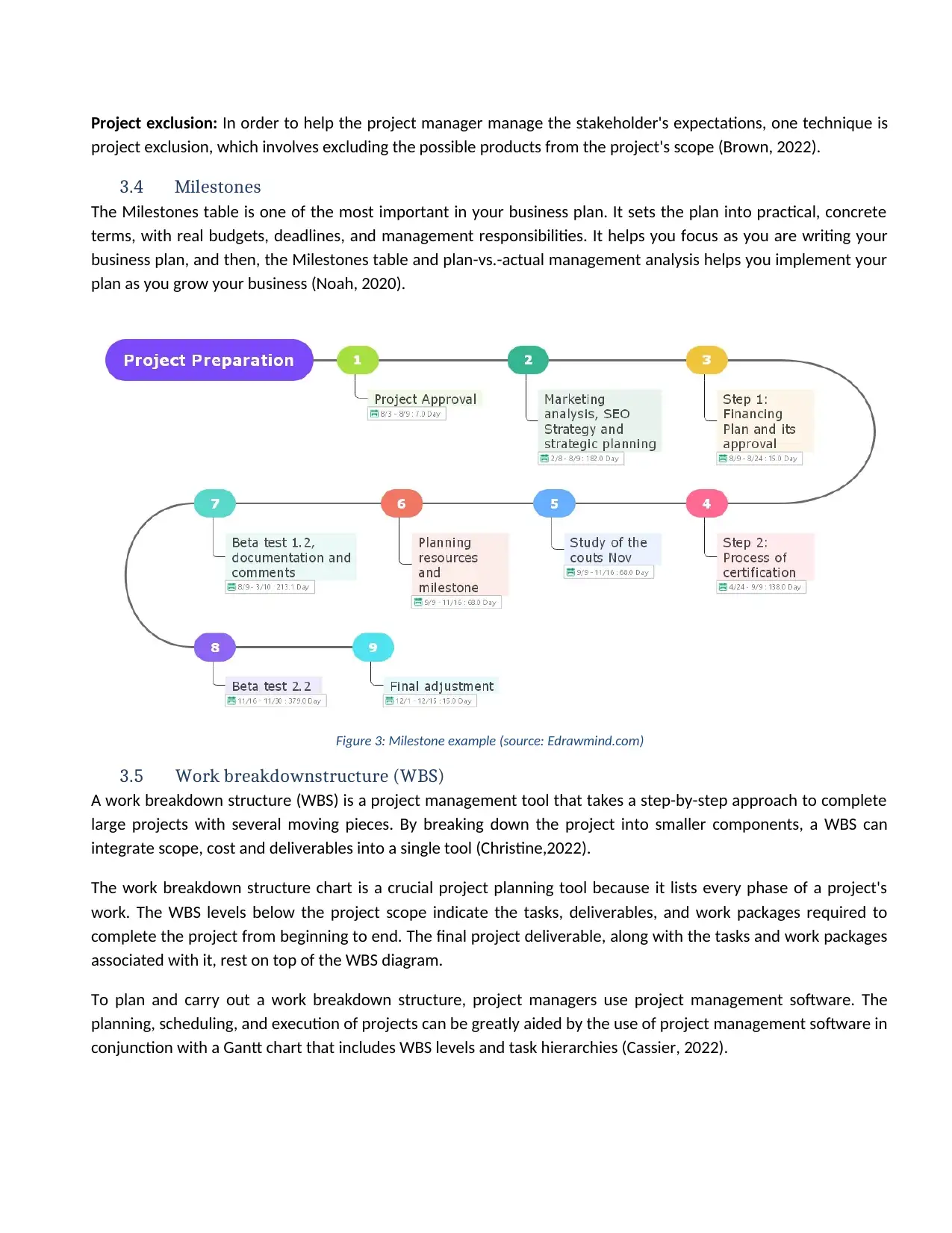
Project exclusion: In order to help the project manager manage the stakeholder's expectations, one technique is
project exclusion, which involves excluding the possible products from the project's scope (Brown, 2022).
3.4 Milestones
The Milestones table is one of the most important in your business plan. It sets the plan into practical, concrete
terms, with real budgets, deadlines, and management responsibilities. It helps you focus as you are writing your
business plan, and then, the Milestones table and plan-vs.-actual management analysis helps you implement your
plan as you grow your business (Noah, 2020).
Figure 3: Milestone example (source: Edrawmind.com)
3.5 Work breakdownstructure (WBS)
A work breakdown structure (WBS) is a project management tool that takes a step-by-step approach to complete
large projects with several moving pieces. By breaking down the project into smaller components, a WBS can
integrate scope, cost and deliverables into a single tool (Christine,2022).
The work breakdown structure chart is a crucial project planning tool because it lists every phase of a project's
work. The WBS levels below the project scope indicate the tasks, deliverables, and work packages required to
complete the project from beginning to end. The final project deliverable, along with the tasks and work packages
associated with it, rest on top of the WBS diagram.
To plan and carry out a work breakdown structure, project managers use project management software. The
planning, scheduling, and execution of projects can be greatly aided by the use of project management software in
conjunction with a Gantt chart that includes WBS levels and task hierarchies (Cassier, 2022).
project exclusion, which involves excluding the possible products from the project's scope (Brown, 2022).
3.4 Milestones
The Milestones table is one of the most important in your business plan. It sets the plan into practical, concrete
terms, with real budgets, deadlines, and management responsibilities. It helps you focus as you are writing your
business plan, and then, the Milestones table and plan-vs.-actual management analysis helps you implement your
plan as you grow your business (Noah, 2020).
Figure 3: Milestone example (source: Edrawmind.com)
3.5 Work breakdownstructure (WBS)
A work breakdown structure (WBS) is a project management tool that takes a step-by-step approach to complete
large projects with several moving pieces. By breaking down the project into smaller components, a WBS can
integrate scope, cost and deliverables into a single tool (Christine,2022).
The work breakdown structure chart is a crucial project planning tool because it lists every phase of a project's
work. The WBS levels below the project scope indicate the tasks, deliverables, and work packages required to
complete the project from beginning to end. The final project deliverable, along with the tasks and work packages
associated with it, rest on top of the WBS diagram.
To plan and carry out a work breakdown structure, project managers use project management software. The
planning, scheduling, and execution of projects can be greatly aided by the use of project management software in
conjunction with a Gantt chart that includes WBS levels and task hierarchies (Cassier, 2022).
⊘ This is a preview!⊘
Do you want full access?
Subscribe today to unlock all pages.

Trusted by 1+ million students worldwide
1 out of 43
Related Documents
Your All-in-One AI-Powered Toolkit for Academic Success.
+13062052269
info@desklib.com
Available 24*7 on WhatsApp / Email
![[object Object]](/_next/static/media/star-bottom.7253800d.svg)
Unlock your academic potential
Copyright © 2020–2025 A2Z Services. All Rights Reserved. Developed and managed by ZUCOL.



